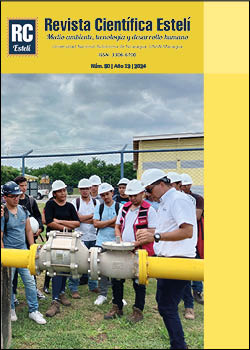Beef (Bos taurus x indicus) maturation time on sensory characteristics and useful life applying dry salting
DOI:
https://doi.org/10.5377/esteli.v13i51.19008Keywords:
Meat, maturation, salting, timeAbstract
Currently, Ecuador has low competitiveness as a result of the low level of technification to which national beef producers are subject, due to the lack of methods that help conserve quality and improve organoleptic characteristics. For this reason, the project proposed using 4 maturation times (15, 30, 45 and 60 days) at a temperature of ± 4°C using the Dry Aged Beef maturation method, to determine, through sensory analysis, the time that best preserves its organoleptic characteristics. Physical-chemical analyses were performed on the raw meat cut which obtained: 6 pH and 70 °Dornic (0.07%) acidity, the microbiological analyses presented values <10 CFU/g estimating absence of fecal coliforms, E. Coli and Salmonella, both parameters were compared with the NTE INEN 1338:2012 standard indicating that their values are within the established range. The sensory judges chose treatment 2 (30 days of maturation) as the sample with the best organoleptic characteristics (color, odor, flavor and texture). The meat with 30 days of maturation presented < 10 CFU/g, which can be estimated as absence of growth at the lowest dilution used for fecal coliforms, E. coli, Clostridium perfringens and Salmonella, considering 30 days of shelf life for the final product.
Downloads
393
HTML (Español (España)) 96
Published
How to Cite
Issue
Section
License
Copyright (c) 2024 Revista Científica de la FAREM-Estelí

This work is licensed under a Creative Commons Attribution-NonCommercial-ShareAlike 4.0 International License.
© Revista Científica de FAREM-Estelí

